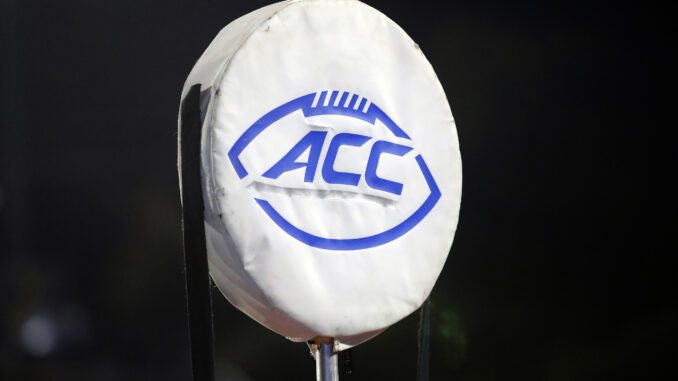
In what now seems like a million years ago, the ACC unveiled its new football scheduling model early last week.
The league is getting rid of the Atlantic and Coastal divisions and assigning each team three primary opponents, which they will play each year.
The model assures that UNC-Duke, UNC-State, Wake-Duke and State-Duke will be played every year. Columnists across North Carolina immediately fired up their venom machines to complain about how we’ll only see Wake-Carolina and Wake-State every two years (which, in the case of UNC and Wake, is over three times more frequently than we’ve been seeing it).
The league has also apparently been negotiating with the state to keep its headquarters in North Carolina, if the $15 million inducement to the ACC in the proposed state budget is any indication. Because it’s important, of course, to stay loyal to the ACC’s roots.
And, while the ACC was paying close attention to its roots, the Big Ten was sharpening its ax.
In the type of ninja strike that the ACC used to be known for, the Big Ten signed UCLA and USC away from the Pac-12, taking the two premiere West Coast programs and putting a dagger into what used to be one of the Big Four conferences. This comes on the heels (relatively speaking) of the SEC firing a similar salvo into the heart of the Big 12, taking the creamy middle of that conference by nabbing Texas and Oklahoma.
The moves have thrust the Big Ten and SEC as the clear frontrunners in the latest realignment free-for-all, with both going full superconference and making it clear that geographical regions are no longer relevant as television money creates a sort of manifest destiny for forward-looking commissioners.
USC is closer to Honduras than the Big Ten’s easternmost members, and, unless something happens quickly, the Central American nation could have as much chance of competing for the College Football Playoff as the top teams in the ACC.
While the ACC hasn’t yet been raided, its future is far from secure. There are already rumors that many of the top programs, including FSU, Miami, UNC and Clemson, have been approached by the Big Two, meaning that commissioner Jim Phillips is playing defense instead of plotting a way to keep up with the lofty goals of the SEC and Big Ten.
The ACC has long considered itself immune to a raid from outside because of its grant of rights agreement, which puts steep financial penalties on any team trying to defect. Maryland, the last ACC team to depart, nearly 10 years ago, faced a $52 million exit fee.
The grant of rights worked in the old days when $52 million was a lot of money. At the time, it was nearly triple Maryland’s operating budget. Consider the green grass on the other side of the fence, however. The SEC was already the country’s undisputed top football conference and now adds two top programs in Texas and Oklahoma. The Big Ten had a strong claim to No. 2 (and both conferences also have a claim at the top spot in basketball in any given year) and now adds the two biggest schools in the Los Angeles market.
Experts estimate that the next TV deal for each conference could pay out at more than $100 million per team. And with the prospect that the SEC and Big Ten could be the only two conferences not considered mid-major anymore, those numbers only promise to go higher. Suddenly, paying off the exit fee — or hiring an even bigger army of lawyers to fight the grant of rights — seems feasible, and the ACC’s golden handcuffs seem more than a little tarnished.
Experts (and granted, these are the same experts that never saw USC and UCLA coming) say the ACC’s future viability rests with Notre Dame. If the conference can hold onto the Irish and lure them into becoming a full-fledged member in football, it can still stake a claim as a major player in the sport and potentially add some of the Pac-12 and Big 12 leftovers to expand. Stanford, Oregon and Cal would give the league an Atlantic and Pacific Coast presence and give the Irish some West Coast opponents.
Of course, the Irish have history with many teams in the Big Ten, including Michigan and Michigan State, and the league’s California move added two other longtime Notre Dame rivals. It’s tough to come up with a compelling reason why the Irish would pick the ACC over the Big Ten’s overtures. What’s left in the Pac-12 doesn’t compare to what’s been taken already. The same is true for the remnants of the Big 12.
ACC leadership has long said that any expansion plans would focus on the league’s footprint. And, while the ACC seemed to focus on that for the last month or so, the only footprint that might matter could end up on the back of the conference’s neck.



